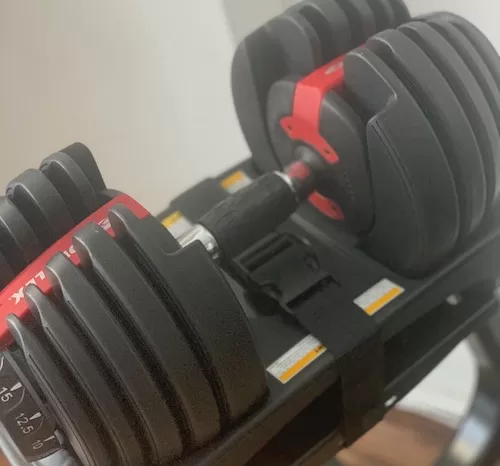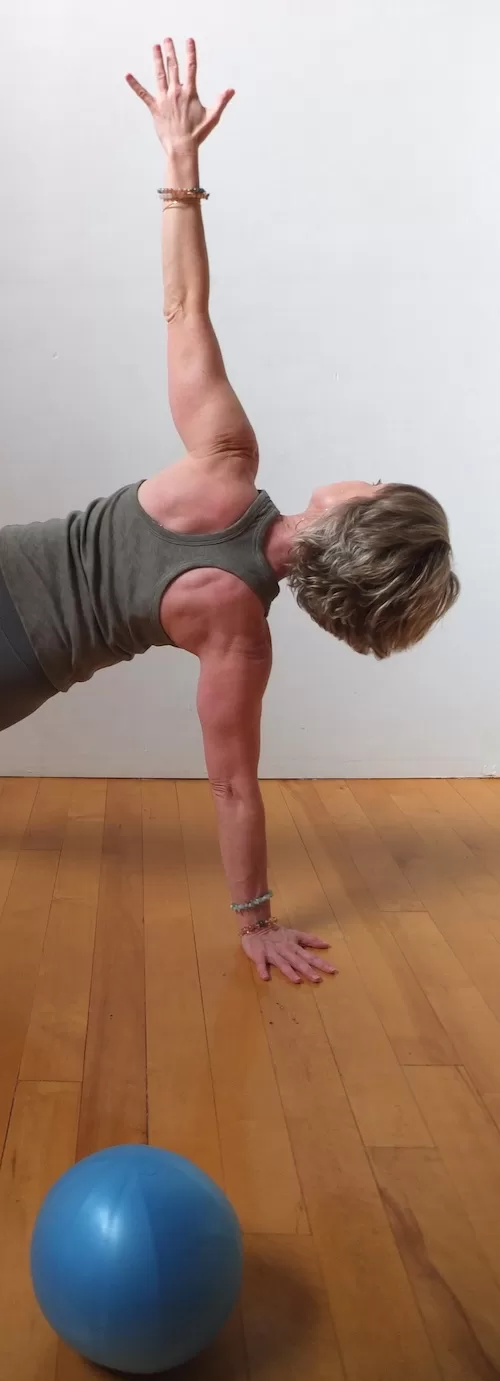Don't I Need to Lift Heavy?
We’ve also noticed a trend of physical therapists and fitness folks recommending jumping for bone health—even encouraging hard landings!—which seems counterintuitive for people who have concerns about their bone health status.
Where did these recommendations come from? And why do the recommendations in our strength workshop vary from these trending recommendations?

LIFTMOR
A paper was published in 2017 on the LIFTMOR trial. The study concludes that “high intensity resistance and impact training enhances indices of bone strength and functional performance in postmenopausal women with low bone mass.”
This paper leads with the assumption that “Optimal osteogenic mechanical loading requires the application of high-magnitude strains at high rates.” This might be true if the only mechanism for resistance training to stimulate bone growth were the mechanical load aspect, but as we’ve learned, it isn’t. There’s also the powerful effect of myokine signaling from the working muscles acting as an input to the bone remodeling process. As we mentioned in the workshop, many studies over decades have shown that variables such as sets/reps, how heavy, etc. don’t matter so long as necessary fatigue is reached for the muscle group (i.e. “emptying the tank”). Examples here, here and here.
The LIFTMOR study takes the stance that “high magnitude strains at high rates (of speed)” are required, but acknowledges that there’s concern as to whether this is safe for people with decreasing bone density. So they set out to a) safety test a high-strain, high-speed protocol and b) compare the results with a control group using a different exercise protocol.
STUDY DESIGN
They selected postmenopausal women over the age of 58 with diagnoses of osteopenia or osteoporosis. The trial period was 8 months. Participants were randomly assigned to one of two groups:
Intervention Group
– Workout Sessions: 2 x 30 minute sessions per week, supervised at the facility with “a maximum of 8 participants per instructor, who was an exercise scientist and physiotherapist”
– Strength Exercises: deadlift, overhead press, barbell squat at 85% of their 1-repetition maximum (very heavy)
– Impact Training: “Impact loading was applied via jumping chin-ups with drop landings: Participants were instructed to grasp an overhead bar with their shoulders and elbows flexed to 90 degrees, and their hands shoulder width apart with an underhand grip. The participant then jumped as high as possible while simultaneously pulling themselves as high as possible with their arms. At the peak of the jump, the participant dropped to the floor, focusing on landing as heavily as comfortably possible.”
Control Group
– Workout Sessions: 2 x 30 minute sessions per week, on their own at home
– Exercises:
• Walking for warm-up (10 minutes) & cool down (5 minutes),
• Low-load resistance training (lunges, calf raises, standing forward raise, and shrugs)
• Stretches (side-to-side neck stretch, static calf stretch, shoulder stretch, and side-to-side lumbar spine stretch).

DESIGN FLAWS?
Looking at this design, you could see a few different studies that could have been run:
- Workouts supervised by trained professionals vs. home workouts alone (by the way, how do we know for sure that the control group participants even did all of their home workouts?)
- Heavy barbell exercises for major muscle groups vs. light-weights exercise for (mostly) smaller muscle groups
- Jumping with hard landings vs. easy walking
As to point #1, anyone who has ever exercised can answer that one! So already, we aren’t really comparing apples to apples.
Point #2: Lifting heavy will certainly empty the tank faster than the a lighter workout, especially with real-time coaching on form and technique. (Remember our Chair Squat example and how that can be a non-event or a very challenging exercise, depending upon how you do it.) The lunges at home, adding hand weights as you progressively grow stronger, done to the point of one of our “stopping conditions”, can probably get you pretty close to the benefit of 5 reps of a heavy barbell squat– and without having to put a heavy bar on the back of your neck.
And #3: Taking a tour through the literature on “strain level” (force of impact) and bone response, it seems clear that increased impact equals increased bone response, up to the point where the impact becomes damaging (fracture). Research suggests that walking might be enough to maintain bone mineral density, but not increase it. And of course this would depend upon gait – is it a nice brisk walk, or slow and careful? Flat or incline?
So, If you were not doing any resistance training, you would probably want to include an impact activity. But you could think of brisk, challenging walks as maintenance for many aspects of health including bone, and then use your knowledge of how to strength train effectively for your most robust bone health.
Or you could do both, if you really wanted to hedge your bets. The great news is, the intervention group in the LIFTMOR study had zero injuries, just one “minor lower back spasm”. We can glean from this that women with osteopenia and osteoporosis are not so fragile as we might be led to believe!
CONCLUSIONS
Of course, with any training it’s important to adhere to the principle of “progressive overload”. Just as you wouldn’t pick up a 50-pound dumbbell in your first strength workout, you wouldn’t want to go from being generally sedentary to doing heavy drop landings. Start by walking comfortably, then briskly, then hilly, then possibly with a weighted vest, etc.
And as we said, if you get into Olympic lifting and you love it, and you’re careful to apply your knowledge of proper alignment while you’re under those heavy loads, go for it! Just know this is not necessary to develop the healthy muscle mass that will keep your bones strong.
-
Watson, Steven L., et al. “High-Intensity Resistance and Impact Training Improves Bone Mineral Density and Physical Function in Postmenopausal Women With Osteopenia and Osteoporosis: The LIFTMOR Randomized Controlled Trial.” Journal of Bone and Mineral Research, vol. 33, no. 2, 2018, pp. 211-220. Wiley Online Library, https://doi.org/10.1002/jbmr.3284.
-
Souza, Daniel, et al. “High and low-load resistance training produce similar effects on bone mineral density of middle-aged and older people: A systematic review with meta-analysis of randomized clinical trials.” Experimental Gerontology, vol. 138, 2020, 110973. ScienceDirect, https://www.sciencedirect.com/science/article/abs/pii/S0531556520303211.
-
Bocalini, Danilo S., et al. “Moderate Resistive Training Maintains Bone Mineral Density and Improves Functional Fitness in Postmenopausal Women.” Journal of Aging Research, 2010 Jun 13;2010:760818. doi: 10.4061/2010/760818. PMID: 21188230; PMCID: PMC3003976. https://pmc.ncbi.nlm.nih.gov/articles/PMC3003976/.
-
Hamaguchi, Kanako, et al. “The effects of low-repetition and light-load power training on bone mineral density in postmenopausal women with sarcopenia: a pilot study.” BMC Geriatrics, 2017 May 2;17(1):102. doi: 10.1186/s12877-017-0490-8. PMID: 28464798; PMCID: PMC5414134. https://pmc.ncbi.nlm.nih.gov/articles/PMC5414134/.
